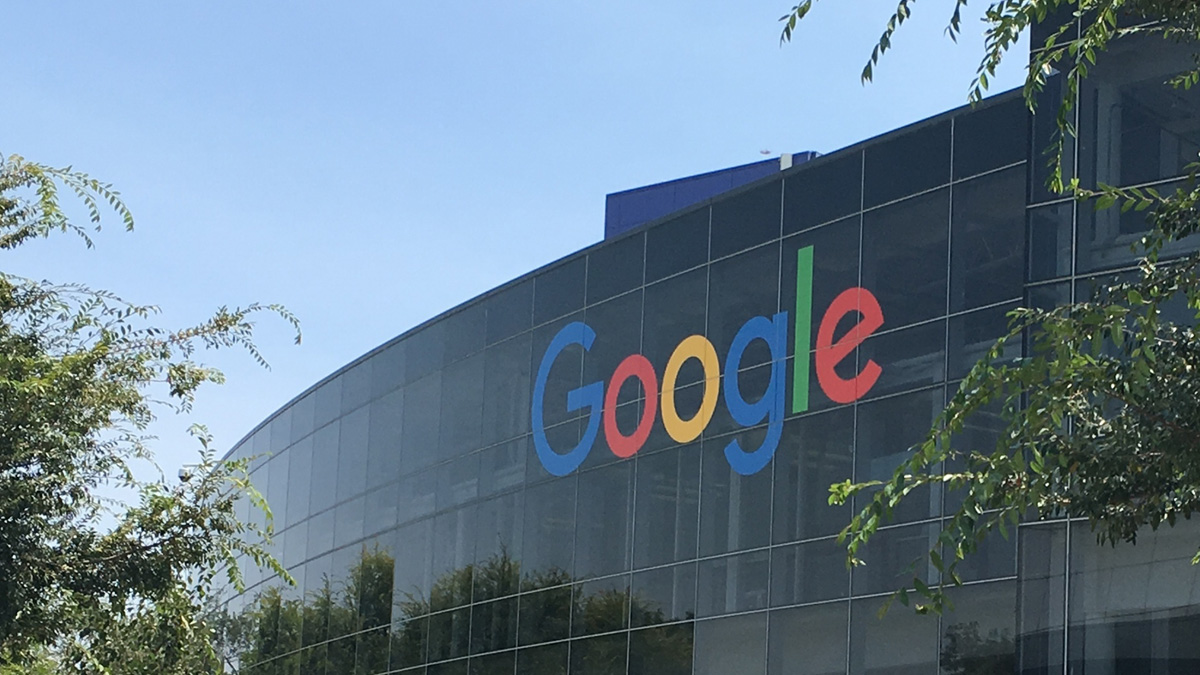US Government Considers Divesting Google: A Step Toward Fair Competition?

The U.S. government is taking significant steps in the ongoing antitrust case against Google. On October 8, 2024, the Department of Justice (DOJ) proposed a framework to tackle what it describes as Google’s anticompetitive behavior in online searches and search advertising.
What’s Happening?
A federal judge, Amit Mehta, ruled in August that Google holds a monopoly over mobile search. This ruling has set the stage for potential remedies aimed at restoring competition in the digital marketplace.
Why Divestment?
Divestment means forcing Google to sell off parts of its business. The DOJ believes this could level the playing field for other companies and foster innovation. The goal is clear: reduce Google’s dominance and encourage fair competition.
Potential Impacts
- Market Dynamics: Divesting parts of its business could open doors for new players in the search engine market.
- Consumer Choices: More competition may lead to better services and options for users.
- Innovation Boost: Smaller companies could innovate without being overshadowed by Google’s vast resources.
What’s Next?
The DOJ’s proposal will undergo scrutiny in court. If approved, it could reshape how online searches are conducted and who benefits from them.
This move signals a growing commitment from regulators to ensure fair practices in tech industries dominated by a few giants. As this case unfolds, many will be watching closely to see how it affects not just Google but the entire digital landscape.
Understanding the Government’s Move Against Google: Behavioral and Structural Remedies
The landscape of tech giants is shifting. Recent filings reveal that the government is eyeing “behavioral and structural remedies” to curb Google’s dominance. But what does this mean for consumers, competitors, and the future of technology?
What Are Behavioral Remedies?
Behavioral remedies focus on changing how a company operates without breaking it apart. In Google’s case, this could involve:
- Limiting Data Sharing: Ensuring Google doesn’t use data from Chrome or Android to boost its search engine unfairly.
- Equal Access: Mandating that rivals have equal access to Google’s platforms, preventing favoritism.
These measures aim to create a level playing field for all players in the market.
What About Structural Remedies?
Structural remedies take a more drastic approach. This often involves splitting up parts of a business or selling off assets. For Google, this could mean:
- Divesting Chrome: Separating its browser from the core business could reduce conflicts of interest.
- Breaking Up Android: Splitting its mobile operating system might foster competition among app developers and manufacturers.
Such actions would reshape how Google operates in fundamental ways.
Why Now?
The timing of these considerations stems from growing concerns over monopolistic practices. Critics argue that Google’s integrated ecosystem stifles innovation and limits consumer choice. By addressing these issues now, regulators hope to encourage fair competition.
Implications for Consumers
If these remedies are implemented, consumers might see several changes:
- More Choices: A diverse range of search engines and apps could emerge as barriers lower.
- Improved Services: Competition often leads to better services as companies strive to attract users.
However, there may also be short-term disruptions as companies adjust to new regulations.
The Road Ahead
The path forward isn’t clear-cut. Implementing behavioral or structural remedies will require careful consideration and negotiation. Stakeholders must weigh the benefits against potential risks.
Google’s Stance on Antitrust Proposals: A Deep Dive
In a bold statement, Google has labeled recent government proposals as “government overreach.” The tech giant argues that these “radical and sweeping” measures could harm both developers and consumers. This perspective highlights the ongoing tension between innovation and regulation in the fast-paced tech industry.
Google’s response comes in light of potential remedies from regulators that could reshape its operations significantly. The company asserts that these proposals exceed the legal boundaries set by a recent court decision regarding search distribution contracts. By framing it this way, Google emphasizes the risks of stifling innovation through overregulation.
Historical Context: A Comparison to AT&T
If these regulatory measures proceed and receive court approval, they would mark a significant moment in U.S. antitrust history. The last major breakup of a company occurred in 1982 with United States v. AT&T. That case forced AT&T to split into seven smaller entities known as the “Baby Bells.” This monumental change took two years to implement, culminating in 1984.
The comparison raises questions about whether we are witnessing a similar turning point today. Just as AT&T’s breakup aimed to foster competition, regulators argue that breaking up tech giants like Google could lead to a more level playing field.
Implications for Innovation and Consumers
Google warns that such drastic actions may have unintended consequences. In an industry characterized by rapid advancements, excessive regulation might hinder progress rather than promote it. Developers could face increased challenges in creating new technologies, while consumers might see fewer choices and higher prices.
The company’s commitment to making its case in court underscores its determination to fight back against what it views as overreach. Google’s legal battle will likely focus on proving that maintaining its current structure is essential for fostering innovation and delivering value to consumers.
The Implications of Google’s Antitrust Case: A Closer Look
The ongoing legal battle between the Department of Justice (DoJ) and Google is a pivotal moment in the tech industry. As discussions about divestment unfold, many are drawing parallels to the landmark case of USA vs. Microsoft Corp.
Google’s Dominance in Browsers
The DoJ’s filing highlights a crucial point: Google’s control over the Chrome browser significantly limits competition. With Google Search as the default, new players struggle to gain traction. This monopoly stifles innovation and restricts consumer choice.
The Android Ecosystem
Moreover, the DoJ emphasizes that the Google Play Store is essential for all Android devices. This creates a scenario where developers are often forced to comply with Google’s terms, further entrenching its market position. The Android Agreements serve as tools for maintaining this dominance, raising serious concerns about fair competition.
The Call for Structural Remedies
The DoJ asserts its responsibility to seek remedies that not only address current harms but also prevent future violations. This raises an important question: Are behavioral remedies sufficient? Historically, they have proven challenging to enforce effectively. Structural remedies may be necessary to dismantle existing monopolies and foster a healthier competitive landscape.
What Lies Ahead?
As this case progresses, it could set significant precedents for how tech giants operate. If successful, the DoJ’s efforts might reshape the digital marketplace entirely.
Addressing Google’s Monopoly: Proposed Remedies by the DoJ
The Department of Justice (DoJ) is taking a bold step to tackle Google’s monopolistic behavior. They’ve identified four key areas of concern that need urgent attention. Let’s break them down.
1. Search Distribution and Revenue Sharing
Google dominates the search engine market. This control affects how information is shared and accessed. The proposed remedies include:
- Contract Requirements: Companies partnering with Google may face restrictions that limit competition. New rules could ensure fairer contracts, promoting diversity in search distribution.
- Non-Discrimination Product Requirements: This would prevent Google from favoring its own services over competitors’. Everyone deserves equal visibility.
2. Generation and Display of Search Results
How search results are generated and displayed matters significantly. Transparency is crucial here.
- Data and Interoperability Requirements: Users should have access to data about how their searches are processed. Ensuring compatibility with other platforms can also enhance user choice.
3. Advertising Scale and Monetization
Google’s advertising power is immense, leading to unfair advantages for some businesses.
- Structural Requirements: Breaking down certain aspects of Google’s advertising model could foster a healthier marketplace, encouraging innovation and competition among smaller players.
4. Accumulation and Use of Data
Data is the new oil, but it needs regulation to protect users.
- Prohibitions on Data Misuse: Clear guidelines must be established regarding how data can be collected and used. Users deserve transparency about their information’s fate.
Addressing Google’s Unlawful Conduct: A Path Forward
In today’s digital landscape, Google holds a dominant position in search distribution. Most devices in the U.S. come preloaded with Google Search, making it nearly impossible for users to choose alternatives. This monopoly not only stifles competition but also limits innovation.
The document emphasizes that the first step to rectify this situation is to undo the effects of Google’s control over search distribution. Simply put, we must dismantle the barriers that keep other search engines from competing fairly.
Ending Current Control
To fully remedy these harms, it’s crucial to address how Google controls distribution today. This means ensuring that consumers have easy access to alternative search engines right out of the box. When users buy a new device, they should see options—Bing, DuckDuckGo, or others—alongside Google.
Looking Ahead
However, this isn’t just about current practices; it’s about preventing future monopolistic behaviors. The document stresses that we need safeguards in place to ensure Google cannot dictate distribution tomorrow. This requires regulatory measures and policies that promote fair competition.
A Call for Action
The urgency is clear. Without immediate action, we risk entrenching Google’s dominance even further. Policymakers must act decisively to create an environment where diverse search options thrive.
The DoJ’s Evaluation of Google’s Practices: A Step Towards Fair Competition
The U.S. Department of Justice (DoJ) is taking a hard look at Google’s business practices. Their focus? Preinstallation agreements and revenue-sharing arrangements that favor Google’s search products. This could change the landscape of online search forever.
What Are Preinstallation Agreements?
Preinstallation agreements allow companies to bundle their products with devices. For instance, when you buy a new smartphone, Google’s apps often come preloaded. This gives Google an edge over competitors, making it harder for them to gain visibility.
Revenue-Sharing Arrangements
These arrangements involve payments between companies to promote certain services. Google has been known to engage in such deals, ensuring its search engine remains the default choice on various platforms. This not only limits competition but also stifles innovation.
The DoJ’s Concerns
The DoJ argues that these practices lead to “unlawful behavior.” They believe Google’s dominance allows it to gather and utilize data in ways that disadvantage rivals. By controlling access to critical information, Google can maintain its position at the top.
Potential Remedies
To level the playing field, the DoJ is considering several remedies:
- Limiting Preinstallation: Prohibiting or restricting preinstalled agreements could open doors for alternative search engines.
- Sharing Data: The DoJ suggests requiring Google to share its indexes, data feeds, and models used for search. This would enable competitors to enhance their offerings.
- Transparency in Search Results: Making Google’s ranking signals available could provide insight into how results are generated, fostering fair competition.
Implications for Consumers
If these changes are implemented, consumers might see a broader range of choices in search engines and related services. Increased competition could lead to better features and improved user experiences.
The Impact of Google’s Monopoly on Search Results and Advertising
In today’s digital landscape, Google reigns supreme. With its search engine dominating the market, concerns are rising about the implications for content creators and advertisers alike. A recent document highlights critical issues surrounding this monopoly.
The Power Imbalance
Many websites rely on Google for visibility. However, these third-party creators often have little bargaining power. They depend on Google’s algorithms to drive traffic but risk retaliation if they challenge the status quo. This creates a precarious situation where their livelihoods hang in the balance.
Proposed Solutions
To address these concerns, the government is contemplating new regulations. One idea is to allow websites to opt out of being used in Google’s AI training or appearing in its products. This could empower content creators, giving them more control over how their work is utilized.
Advertising Challenges
The document also sheds light on advertising dynamics. Google’s dominance has limited advertisers’ choices when it comes to search providers. This monopoly stifles competition and makes it harder for rivals to monetize their advertising efforts effectively.
Leveling the Playing Field
The proposed changes aim to level the playing field in both content creation and advertising. By allowing websites more autonomy, we can foster a healthier ecosystem where creativity thrives without fear of exclusion.
The Department of Justice’s Antitrust Actions Against Google: What You Need to Know
The Department of Justice (DoJ) is taking significant steps to address concerns about Google’s dominance in the advertising space. Their recent evaluations focus on two key remedies: licensing or syndication of Google’s ad feed independent of its search results and ensuring transparency for advertisers.
Licensing and Syndication
One major proposal involves separating Google’s ad feed from its search results. This means that advertisers could access Google’s ad services without being tied directly to its search engine. Such a move aims to foster competition, allowing smaller companies a fairer chance in the advertising landscape.
Transparency for Advertisers
Another critical aspect is providing Google search advertisers with detailed insights into how their ads are performing. By revealing information about auction processes and monetization strategies, the DoJ hopes to create a more level playing field. Advertisers deserve clarity on where their money goes and how it impacts their visibility.
Monitoring Compliance
To ensure that these remedies are implemented effectively, the DoJ is considering several oversight measures:
- Court-Appointed Technical Committee: The government may request that Google finance an independent committee responsible for monitoring compliance with the proposed remedies. This committee would assess whether Google adheres to new regulations and guidelines.
- Regular Reporting by Executives: A senior executive from Google might be required to report regularly to the court on compliance efforts. This would add another layer of accountability, ensuring that Google’s actions align with legal expectations.
Upcoming Timeline
The DoJ plans to present a refined Proposed Final Judgment by November 2024, followed by a Revised Proposed Final Judgment expected in March 2025. These timelines indicate the seriousness with which the government is approaching this case.
Conclusion
The DoJ’s actions signal a pivotal moment in regulating big tech companies like Google. By pushing for greater transparency and independence in advertising practices, they aim to foster competition and protect consumers and businesses alike.







